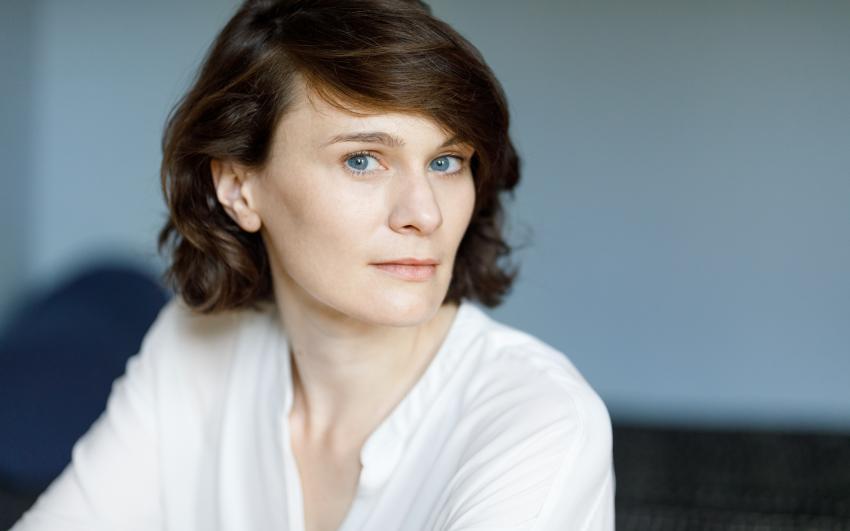'Every interaction has a purpose. This isn’t about putting on a show. It’s about creating real change in people’s lives.'
Catherine Duquette talks about what interactive means for Mary and Her Monster, a work-in-progress sharing on 15 Jun as part of the 10th Anniversary of Calm Down Dear.
What is the player doing?
When I worked in narrative-driven mobile games, my mentor would demand: What is our protagonist doing? Whatever your main character is doing, your player is doing. That’s their driving force through the game. And why is your protagonist doing it? It has to make sense in the narrative world; it has to be meaningful. Otherwise, the link between the player and the character is at risk, and the player’s conviction in the game itself falters.
How does this translate to the stage?
My work is interactive; it gives space for the audience to engage with the performers and material on stage, either through conversation, physical activities, or game-based play. However, the key difference here from video games, is that the audience are not moving through the performance as a character but instead as themselves. I consider the audience my co-players and the performance a process by which we explore a set of themes together in real time. So I have to ask myself: What is the audience doing? And why are they doing it? Every interaction has a purpose. This isn’t about putting on a show. It’s about creating real change in people’s lives.
How I’ve done that in previous work
Sometimes, the format can be self-explanatory. For example, in my previous work, #Instalove, a participatory show about love, risk, and our own multiplicity, the audience’s role was clear. They were dating the performer (me, playing multiple characters), deciding which of the four characters would make it to the final rounds and ultimately win. On quick glance, it was choose-your-own-adventure. But what was the audience really doing and why?
Each character represented a set of themes, and the audience’s choice of certain characters determined which we explored and in how much depth. What burning question does an audience want to explore? While much of the material was scripted, a lot also came directly from the audience on the night. As a result, every show was completely different.
By expressing my own vulnerability and uncertainty around the themes of the piece, the audience felt safe to do the same. When people witnessed other audience members on stage taking these emotional risks, it encouraged them to take similar risks either onstage or in their own lives. In #Instalove for example, we saw:
- A woman admit to herself that she was in love with her best friend and confess that love to them.
- A middle-aged couple end their relationship because they came to the show to get some questions answered, and answers they found.
- A man realise for the first time and confess that he cheated in his previous relationships, that he’s been the one consistently breaking down his relationships.
- A woman, despite social pressures, admit that all she wanted was to have a family, and the audience settle in awe.
How we’re doing it in Mary and Her Monster
In Mary and Her Monster, it’s a bit more complicated. We’re fundamentally exploring the creative process and what it means to create a life - and all the themes that get caught up in that: becoming a mother and what it means to mother (metaphorically) in the face of capitalism and technology creating pale imitations of life, using Mary Shelley and her famous story of Frankenstein as our anchor.
It stems from my own isolation of becoming a mother, having just moved to the UK just before - are we even allowed to say the C word? It seems like a distant memory, yet most of us are still unknowingly trying to shake it off. When prompted to imagine a world better suited to those who mother (and by mother, I mean those who birth, parent, care for others, nurture and create space for life to thrive) I was stumped. I was frustrated that most of my ideas were in reaction to our current systems - like I had heard it all before: shared paternity leave, free childcare, “it takes a village”, axing the nuclear family unit, community based education - and even more frustrated by the powerlessness I felt in trying to realise any of those.
When I became a mother, life changed dramatically. I’d never felt more boxed in and deprived of possibility. At the same time, the awesome potential of this new human both terrified and inspired me. How could I rise to the scale of the event?
As I reached out to communities of mothers and non-binary parents with new babies, I discovered many in early parenthood railing against a system not designed for them and felt the magnitude of their invisibility and sense of powerlessness in even imagining other possibilities for themselves.
So for this early work-in-progress iteration during Calm Down Dear festival, we want to uncover: What is the audience doing and why?
How can we take the audience through the creative process? How do we exercise their imagination so they can apply it to their own lives? How do we crack open a little more possibility? Especially against the seeming impossibility of it all.
Handing over the crux of the work to the audience is full of risk and demands a longer development process, but when it lands, it’s worth it.
Mary and Her Monster
Thu 15 Jun 7.30pm
Tickets £8 (work-in-progress)
